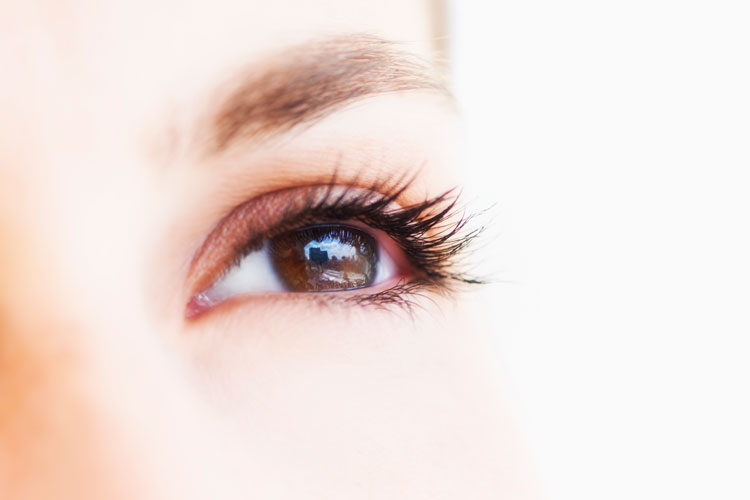WHAT IS DIABETIC RETINOPATHY?
Diabetic retinopathy is a disorder of the retinal blood vessels resulting from diabetes mellitus. Diabetic retinopathy is the leading cause of new blindness in working adults in developed countries. The trend is also becoming similar in Vietnamese adult population.
The incidence of diabetic retinopathy increases with the duration of diabetes. About 60% of patients having diabetes for 15 years or more will have some blood vessel damage in their eyes and a percentage of these are at risk of developing blindness.
Who is at risk? Several factors can influence the development and severity of diabetic retinopathy, including:
- Uncontrolled blood sugar levels
- High blood pressure
- Duration of diabetes
- Blood lipid levels (cholesterol and triglycerides)
- Pregnancy.
WHAT ARE THE DIFFERENT TYPES OF DIABETIC RETINOPATHY?
Background retinopathy:
Background retinopathy is an early stage of diabetic retinopathy and progresses slowly over the years. The retina usually shows evidence of tiny blood spots of fatty deposits.
The majority of patients do not develop vision loss except for a gradual blurring of vision which can often go unnoticed. In some patients, blood vessels leak at the macula – the part of the retina responsible for central vision, causing loss of vision.
Proliferative Retinopathy:
Proliferative retinopathy develops from background retinopathy and is responsible for most of the visual loss in diabetes. New blood vessels grow (proliferate) on the surface of the retina and optic nerve. These immature blood vessels tend to rupture and bleed into the vitreous cavity. Scar tissues can also grow from ruptured blood vessels which will contract and pull on the retina, detaching it with the resulting loss of vision. New vessels can also grow on the iris and cause a form of glaucoma, which itself can lead to blindness.
When bleeding occurs in proliferative retinopathy, the patient has hazy or complete loss of sight. Though there is no symptom of pain, this severe form of diabetic retinopathy requires immediate medical attention.

HOW IS DIABETIC RETINOPATHY DIAGNOSED?
Diabetic retinopathy is best diagnosed with a dilated eye exam. For this exam, drops placed in your eyes widen (dilate) your pupils to allow your doctor to better view inside your eyes. The drops may cause your close vision to blur until they wear off, several hours later.
During the exam, your ophthalmologist will look for:
- Abnormal blood vessels
- Swelling, blood or fatty deposits in the retina,
- Growth of new blood vessels and scar tissue,
- Bleeding in the clear, jelly-like substance that fills the center of the eye (vitreous),
- Retinal detachment,
- Abnormalities in your optic nerve.
In addition, your ophthalmologist may:
- Test your vision,
- Measure your eye pressure to test for glaucoma,
- Look for evidence of cataracts.
Special photographic processes are very helpful in detecting early effects of diabetic retinopathy. These are known as fundus fluorescein angiography (FFA), Optical coherence tomography (OCT) and will sometimes be recommended by your ophthalmologist. FFA procedure involves injection of a dye through the arm into the blood stream. As the dye is carried to the eye, photographs of the retina are taken, showing areas of leakage or poor blood flow. OCT is a modern technique and not invasive procedure.
HOW IS DIABETIC RETINOPATHY TREATED?
Control of blood sugar and blood pressure are important but progression of retinopathy may occur despite all medical efforts. It has been demonstrated that a product, called Vascular Endothelial Growth Factor (VEGF), is secreted by the retina in diabetic patients and plays a pivotal role in the development of the diabetic retinopathy. If diabetic retinopathy is detected early, anti-VEGF intra-vitreous injections may stop continued damage. Laser photocoagulation can also be indicated. Even in advanced stages of the disease, these 2 methods can reduce the chance that a patient will have severe visual loss.
Laser photocoagulation treatment is used to seal or obliterate the abnormal leaking blood vessels. This procedure focuses a powerful beam of laser light onto the damaged retina. Small bursts of the laser energy seal leaking vessels and form tiny scars inside the eye. The scars reduce new vessel growth and cause existing ones to shrink and close.
Anti-VEGF intra-vitreous injections are given through the white part of your eye into the jelly (called vitreous) that fills the inside of your eye. Special drugs injected into the jelly spread to the retina (inner layer at the back of your eye) and other structures in your eye.
Both treatments are usually carried in an outpatient setting. They do not require special preparation or admission to hospital.
In advanced cases, with vitreous bleeding into the eye and scar tissue formation, a procedure called vitrectomy can be indicated together with other sophisticated surgical procedures.
Various scientific studies have proven beyond doubt that proper medical eye care by ophthalmologists, laser photocoagulation, anti-VEGF injection and vitrectomy surgery are crucial in the preservation of sight in diabetic patients.
Successful treatment of diabetic retinopathy depends on early detection and treatment. All diabetics are advised to control their diabetes with diet and medication to delay or prevent the development of diabetic retinopathy and other complications. They are also advised to undergo a yearly eye examination.



